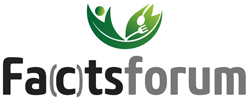ALLERGY TESTING
If the blood sugar level becomes again too high after introducing the foods of the basic diet, or when introducing additional foods, test the blood sugar level before and after each new meal composition. If the rise in the sugar level remains within normal limits, the same ingredients do not normally need to be tested again. However, if there is an unusual rise, test the ingredients of that meal individually, especially any new additions.
Furthermore, try to take your pulse before each test meal and about 30 and 60 minutes after the meal. If the pulse rises much higher than after eating apples only or after a safe meal, an allergy must be suspected even if the blood sugar level does not show an unusual rise. Usually that means that the pulse rises by more than 10 per cent.
If either blood sugar or pulse shows an unusual rise, avoid the food to which this may be attributed for several weeks before testing it again. However, a certain food may not cause a problem if used in small amounts or only once a week, while frequent exposure to larger quantities or combined with other stresses may upset the sugar level. You may discover such pattern from a well-kept diary.
Make a column each for the time, the tested food or ingredient or the composition of the meal, the blood sugar and pulse before and after the meal, and finally any unusual reactions; also keep a record of any blood sugar lowering medication. Even nutritional supplements may react and need to be tested. For further information on allergy testing see
http://www.health-science-spirit.com/HF1-4.html .
http://www.health-science-spirit.com/diabetestreatment.html





